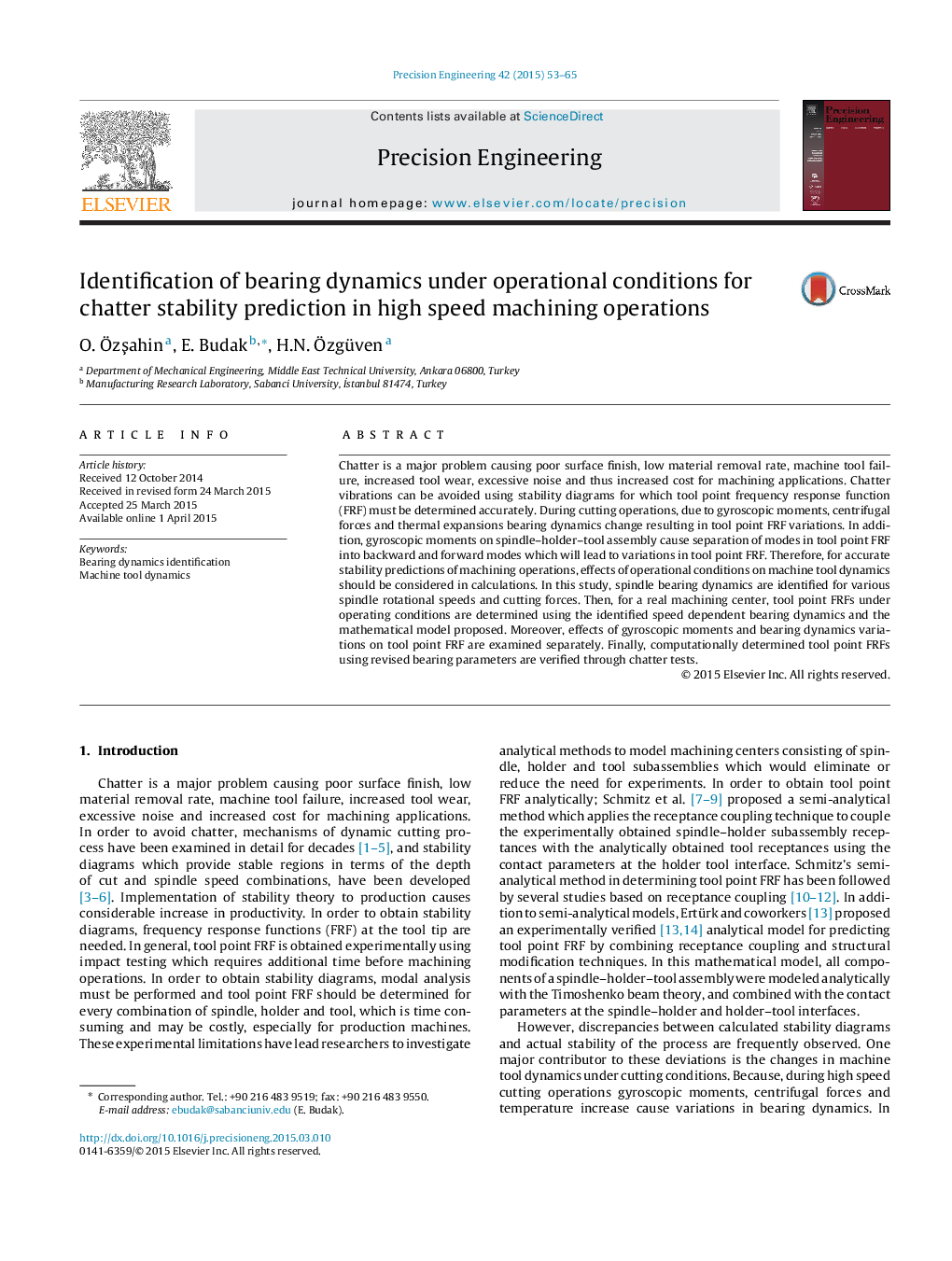| Article ID | Journal | Published Year | Pages | File Type |
|---|---|---|---|---|
| 803864 | Precision Engineering | 2015 | 13 Pages |
•Bearing parameters are identified at idle state and under operational conditions.•Bearing parameters are affected by spindle rotational speed and cutting forces.•Operational conditions affect stability depending on most flexible part in systems.•Variations in stability can be predicted accurately using proposed method.
Chatter is a major problem causing poor surface finish, low material removal rate, machine tool failure, increased tool wear, excessive noise and thus increased cost for machining applications. Chatter vibrations can be avoided using stability diagrams for which tool point frequency response function (FRF) must be determined accurately. During cutting operations, due to gyroscopic moments, centrifugal forces and thermal expansions bearing dynamics change resulting in tool point FRF variations. In addition, gyroscopic moments on spindle–holder–tool assembly cause separation of modes in tool point FRF into backward and forward modes which will lead to variations in tool point FRF. Therefore, for accurate stability predictions of machining operations, effects of operational conditions on machine tool dynamics should be considered in calculations. In this study, spindle bearing dynamics are identified for various spindle rotational speeds and cutting forces. Then, for a real machining center, tool point FRFs under operating conditions are determined using the identified speed dependent bearing dynamics and the mathematical model proposed. Moreover, effects of gyroscopic moments and bearing dynamics variations on tool point FRF are examined separately. Finally, computationally determined tool point FRFs using revised bearing parameters are verified through chatter tests.
